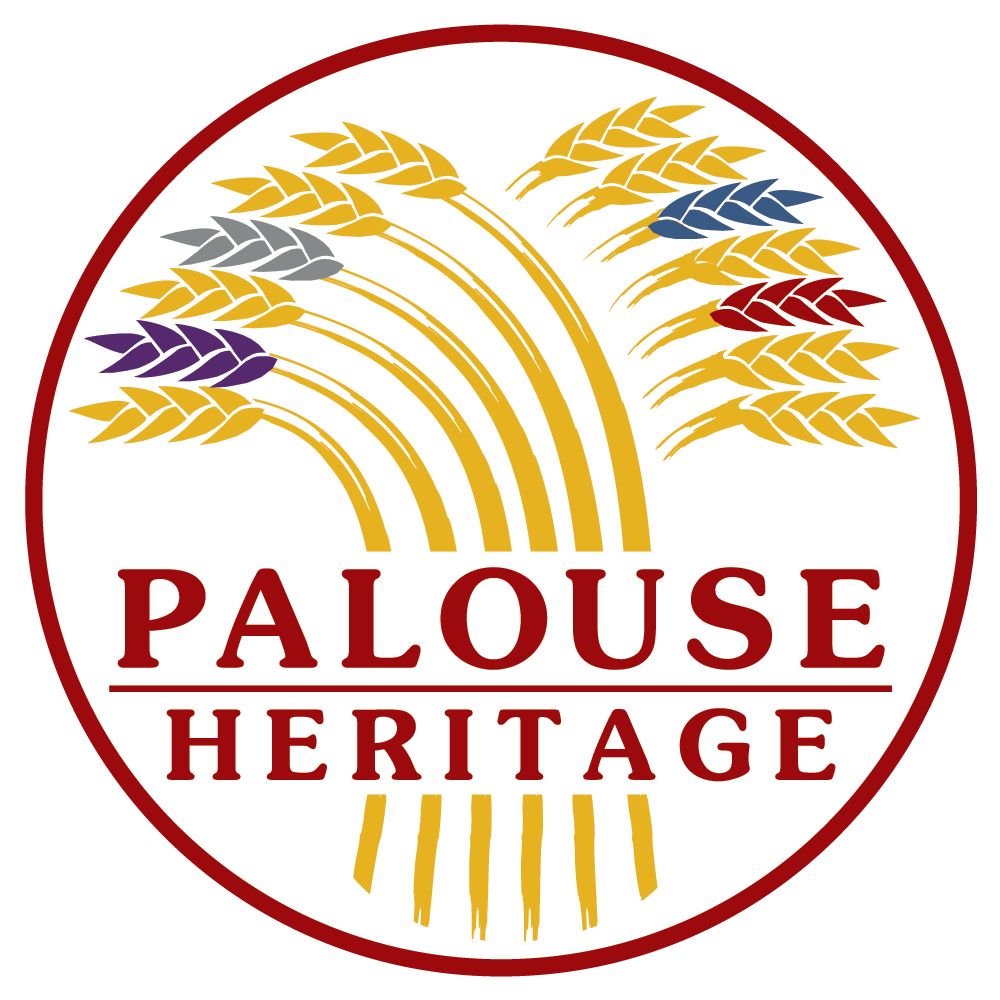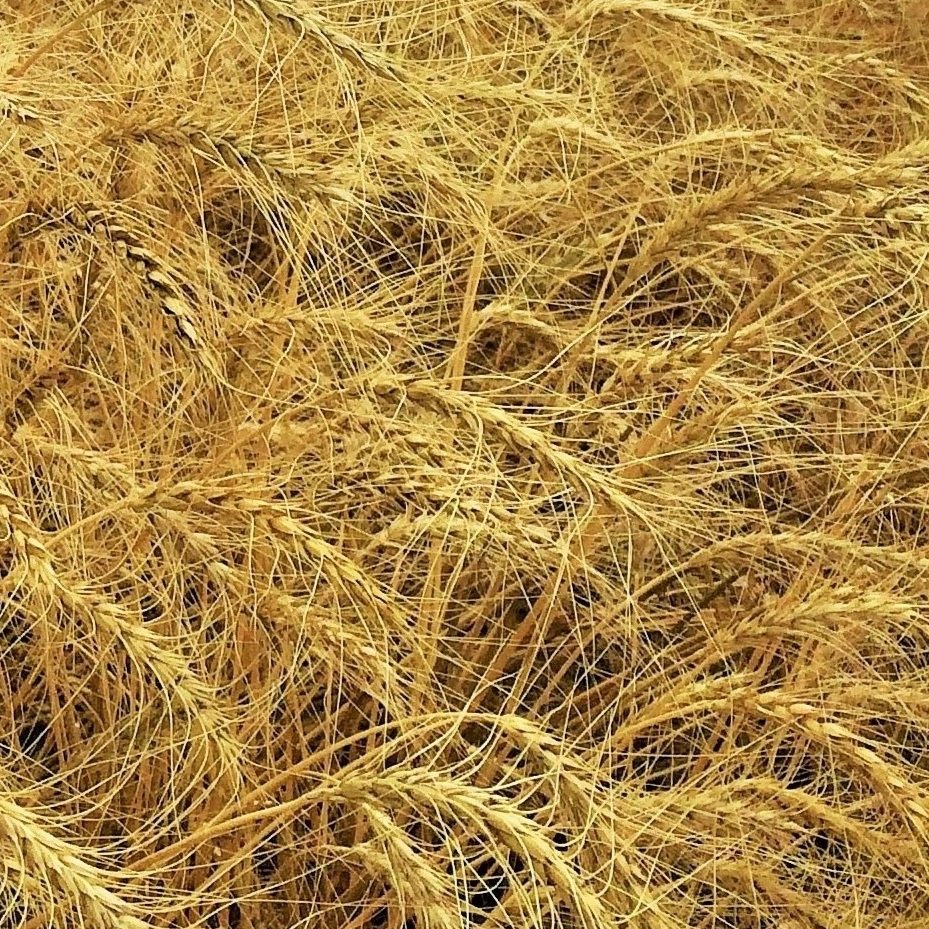Turkey Red Wheat
Learn About the Grandfather of Modern Bread Wheats
Turkey Red Wheat is the famed hard red wheat native to the fertile steppes of southeastern Europe. It is the ancestor to a vast range of modern bread wheats and known for imparting a complex, nutty flavor. Its 19th century name, Turkey Red, originated because German colonist farmers brought it to the American Midwest in the 1870s from areas once inhabited by Russia’s Turkic peoples. Many of these immigrants went on to settle throughout the Pacific Northwest after a vanguard traveled by wagons in the early 1880s to settle in the Palouse and Big Bend districts where Turkey Red has naturally adapted to regional growing conditions.
Turkey Red wheat is ideal for traditional yeast & sourdough breads.
Check out our recipe ideas featuring Turkey Red and tips for baking with heritage grains.
We also have several blog posts featuring Turkey Red Wheat.
Turkey Red protein: 15.1% (USDA inspection results)
Scientific Name & Genetic Details
Turkey Red Wheat is a cultivar of the common bread wheat species Triticum aestivum, the hexaploid wheat grown in most modern bread-wheat systems. As a hard red winter wheat, Turkey Red displays the higher protein and stronger gluten structure characteristic of the hard wheats, rather than the lower-gluten soft wheats. Although detailed modern genetic‐mapping data for Turkey Red itself is limited in public sources, many wheat-breeding programs regard Turkey Red as the “grandfather” or ancestral base for many hard red winter wheat varieties grown in North America today.
Grain Characteristics & Cultivation Techniques
Turkey Red is classified as a hard red winter wheat variety. It has dark red kernels, relatively high protein and gluten content, and historically tall plant stature with long straw (often over five feet tall) which make it prone to lodging in some conditions. Its winter-growth habit allows fall sowing (typically in autumn) and then growth through winter, with harvest in the next year’s summer. This contrasts with many spring wheat varieties which are planted in spring. It is durable, drought‐ and cold‐resistant compared to many earlier spring wheats. Because it is adapted to fall planting and overwintering, it enabled wheat production in regions with colder winters and dry summers. The hard kernel also meant that milling technology needed to adapt (roller mills rather than old stone grist mills) to accommodate it. From a cultivation standpoint, Turkey Red thrives in the Great Plains environment—cold winters, low to moderate rainfall, and relatively dry summer conditions. It also performs very well in our Palouse region of the Inland Northwest.
Origins
Turkey Red’s immediate origin lies in the wheat landraces of the Black Sea / Crimean region (Ukraine/Russia) brought by Mennonite and other immigrant farmers to the United States in the 1870s. These steppes environments had climates and soils somewhat analogous to the American plains, which made the variety already adapted to conditions of cold winters and dry summers. The seed chest that many Mennonite immigrants carried contained Turkey Red seed, and their agricultural knowledge of winter wheat cultivation was key to its successful adaptation in the U.S.
History in North America (including the Pacific Northwest)
In the late 19th century, Turkey Red was introduced into U.S. agriculture at a critical moment of westward expansion and prairie settlement. Most 19th century hard red wheat introductions like Red Fife and Turkey Red were actually not favored by millers in the U.S. and Canada in spite of favorable flavor profiles and desirable baking characteristics. This was because the kernels were simply too hard to properly mill using the equipment of the time, so many growers shifted to production of softer varieties. At the same time, Turkey Red’s hardy winter habit and adaptation to the Great Plains allowed it to explode in acreage: by 1919 in Kansas the variety accounted for more than 80% of planted acres. The cultivar became the foundation of the hard red winter wheat industry in Kansas and beyond. Its arrival and success triggered large-scale changes: farmers switched to fall planting, railway and elevator infrastructure expanded, and roller-mill technology evolved to process the harder kernels. While most of the focus is on the Great Plains states, varieties like Turkey Red also spread into neighboring regions such as the Pacific Northwest and the broader interior West through the late 19th and early 20th centuries, as part of the general migration of winter wheat production north and west. Over time, however, Turkey Red was largely supplanted by shorter, more lodging-resistant, higher-yielding semi-dwarf hybridized varieties in the mid-20th century. Today, more consumers are rediscovering the remarkable advantages of heritage grains like Turkey Red—varieties that offer superior flavor, nutrition, and diversity compared to the modern hybrids that currently dominate our grocery stores and food system overall.
Culinary Uses
Because of its high protein and strong gluten structure, Turkey Red is particularly valued for bread making—loaves that hold shape, have robust crumb and rich flavor. Artisan bakers and heritage-grain enthusiasts value this variety for its “nutty, malty, rich aroma” and deeper flavor profile compared to many modern wheats. Although older milling systems initially struggled to handle its hard kernels, modern roller mills were developed to produce Turkey Red flours. Being a winter wheat and resilient variety, it also lends itself to low-input or dryland farming systems, making it an attractive choice for heritage and organic grain markets.
Milling Notes
In the late 1800s, Turkey Red’s exceptionally hard kernels helped spark the industrial shift from traditional stone mills to roller milling systems, which could produce finer white flour from hard wheats. However, today’s home stone and steel burr mills easily handle Turkey Red’s grain for wholesome, flavorful whole-grain flour. Modern mills like the Mockmill, KoMo, and Country Living efficiently grind this heritage wheat without the need for roller technology—bringing back the rich aroma, nutrition, and malty flavor that made Turkey Red famous among early bakers.
References
Goessel Museum, “Story of Turkey Hard Red Winter Wheat in KS.” (Goessel Museum) mennheritandagmuseum
FarmProgress, “Turkey Red: The wheat that built Kansas.” Farm Progress
“About the Grains,” Rio Grande Grain. Rio Grande Grain
“Turkey Red revolutionized wheat industry,” High Plains Journal. High Plains Journal
Slow Food / Ark of Taste, “Turkey Hard Red Winter Wheat.” Fondazione Slow Food
Kansas Wheat – “A Love Letter to Turkey Red.” Kansas Wheat
“Legacy Wheat – John Deere.” John Deere



